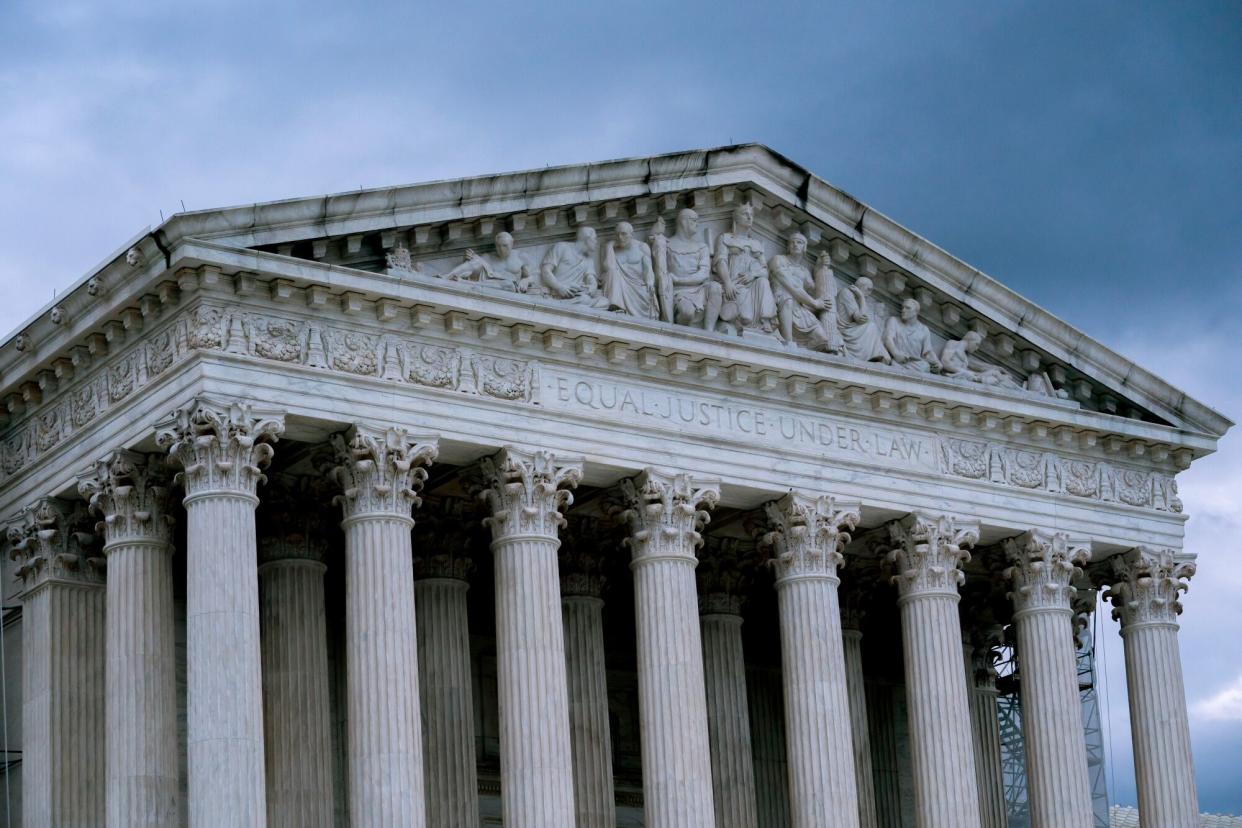Supreme Court Backs Majority-Black Congressional District

- Oops!Something went wrong.Please try again later.
(Bloomberg) -- The US Supreme Court reinstated a Louisiana congressional map that adds a second majority-Black district for the November election, giving Democrats a likely pickup in the battle to control the House.
Most Read from Bloomberg
US Inflation Data Was Accidentally Released 30 Minutes Early
Putin and Xi Vow to Step Up Fight to Counter US ‘Containment’
With a BlackRock CEO, $9 Trillion Vanguard Braces for Turbulence
Jamie Dimon Sees ‘Lot of Inflationary Forces in Front of Us’
Dow Average Touches 40,000 Before Pulling Back: Markets Wrap
The justices put on hold a lower court order that declared the map an unconstitutional racial gerrymander. The new map could mean the ouster of Republican Representative Garret Graves, whose Baton Rouge-area district was carved up to create the new lines. Graves has said he will run in the new district.
The complexities of the case flipped the court’s normal ideological divide. The three liberal justices — Sonia Sotomayor, Elena Kagan and Ketanji Brown Jackson — dissented, with Jackson saying she would have given Louisiana lawmakers time to come up with a revised map.
Louisiana drew the district in response to a ruling, issued by a different court in a separate case, that the state was probably violating the Voting Rights Act by having only a single majority-Black district.
The clash is testing the tension between two lines of Supreme Court precedents. The court has interpreted the Constitution’s equal protection clause as limiting the use of race in redistricting, but the justices have also read the Voting Rights Act to require creation of heavily minority districts in some cases.
The Louisiana fight started with a lawsuit pressed by voters who said the state, which has a 33% Black population and six congressional districts, should have a second predominantly Black district under the Voting Rights Act. The voters won a ruling requiring a second district in 2022 but the Supreme Court put the decision on hold for that year’s election.
A year later, the Supreme Court shifted course and let the Louisiana order take effect after the justices backed a second majority-Black congressional district in Alabama in a similar Voting Rights Act fight.
But after Louisiana enacted a new map – one with the required second majority-Black district – a different group of voters sued, claiming the state had relied too heavily on race in creating the new 6th District. The district runs a jagged course over 250 miles from Shreveport to Baton Rouge, scooping in heavily Black areas along the way.
A federal district court in Louisiana tossed out the new map on April 30 in a 2-1 decision. Louisiana officials and the plaintiffs in the earlier case then turned to the Supreme Court.
Louisiana officials told the Supreme Court they needed to start implementing the congressional map by May 15. The filing deadline for congressional candidates to get on the ballot for specific districts is July 17-19.
Louisiana has an unusual election system in which candidates from all parties will appear on the same ballot on Nov. 5. If no one gets more than 50%, then there is a runoff on Dec. 7.
In blocking the order Wednesday, the Supreme Court pointed to a 2006 decision, Purcell v. Gonzalez, that has come to stand for the principle that federal judges shouldn’t change voting rules too close to an election. The court didn’t provide any additional explanation.
In her dissenting opinion, Jackson said that ruling “has no role to play here.” She added: “There is little risk of voter confusion from a new map being imposed this far out from the November election.”
The latest cases are Robinson v. Callais, 23A994, and Landry v. Callais, 23A1002.
(Updates with breakdown of court in third paragraph.)
Most Read from Bloomberg Businessweek
How the ‘Harvard of Trading’ Ruined Thousands of Young People’s Lives
Milei Targets Labor Law That’s Set to Hand Banker $10 Million Severance
©2024 Bloomberg L.P.


